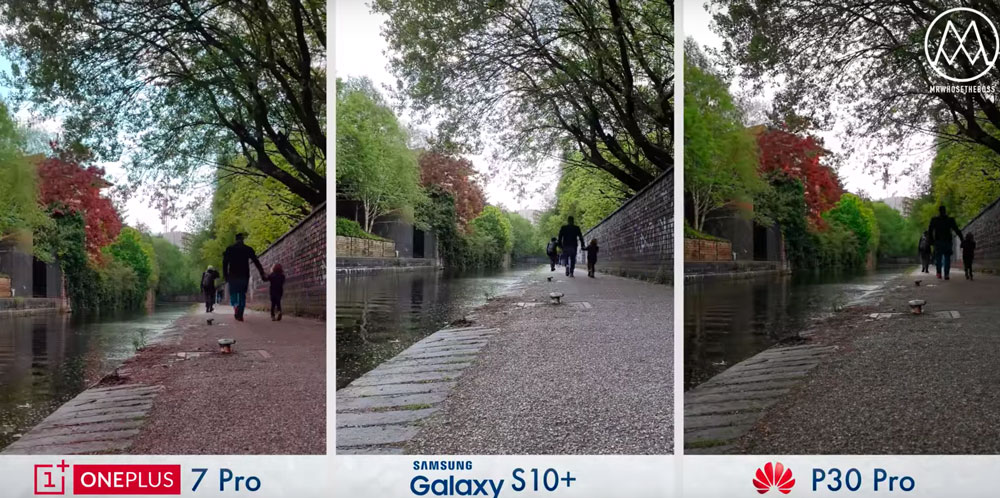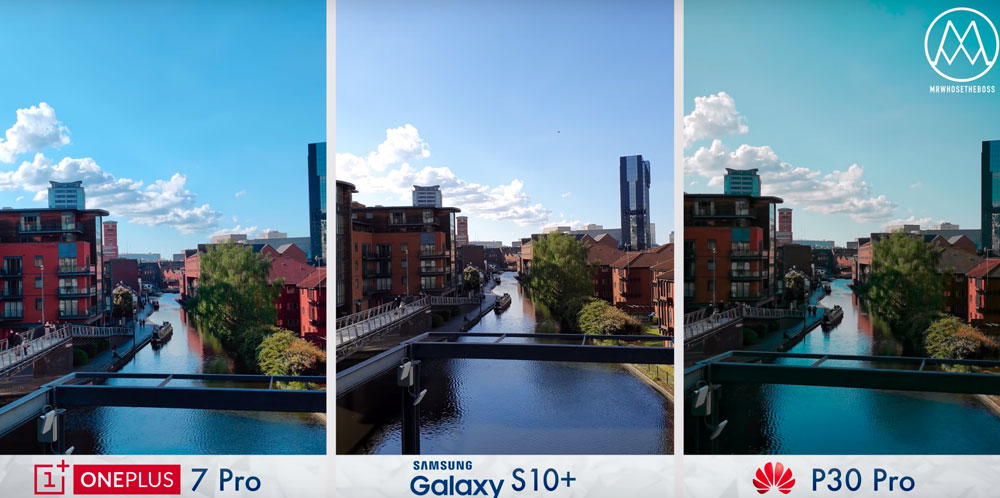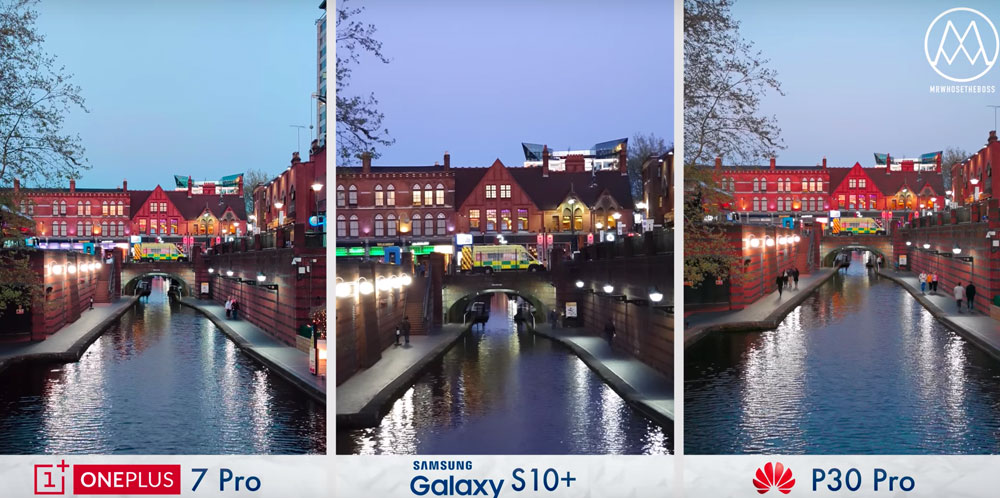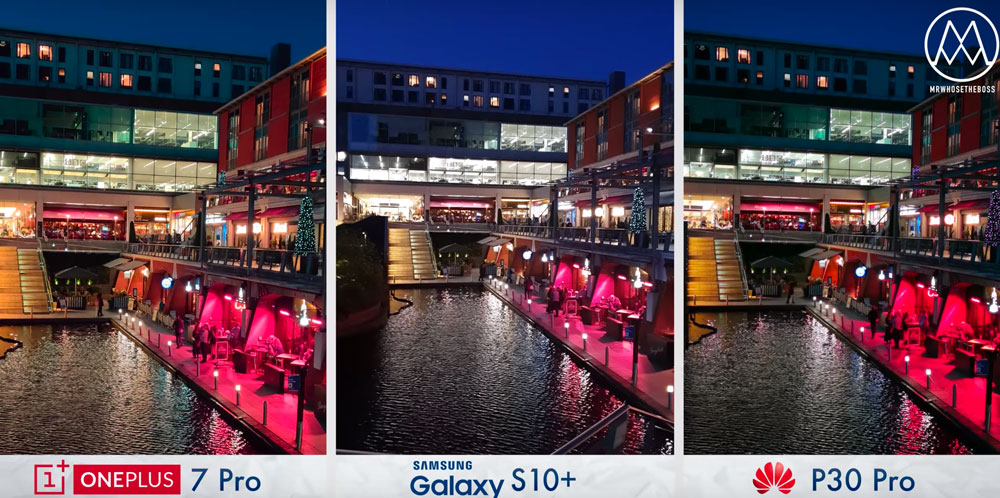OnePlus 7 Pro vs Samsung Galaxy S10 Plus vs Huawei P30 Pro for Video
I was a OnePlus One user until I got Samsung phones as part of our old sponsorship deal. From the start, OnePlus managed to create a special aura around their phones. Before I got my OnePlus, I remember a friend proudly telling about his and how only those invited could buy one. Played a few marketing games and some of the worked, some of them misfired.
Well, here they are with the OnePlus 7 Pro.
“Costing from £649 the new premium OnePlus still undercuts the competition by about £250, but isn’t quite as value-oriented as previous offerings.” Samuel Gibbs, Guardian
The phone goes up to 12GB RAM/256GB storage for £799/$749. It’s not a budget phone, but it’s not as pricey as the phones it’s going after such as the Samsung S10 Plus and Huawei P30 Pro.
Top YouTuber, Marques Brownlee, is calling it his favourite phone of 2019 so far.
As a smartphone filmmaker, I’m mostly interested in the video shooting specs of a new phone. So let’s see what we’ve got…
OnePlus 7 Pro
The OnePlus 7 Pro comes with a 16Mp ultra-wide (f/2.2) lens and a 8Mp telephoto (f/2.4) lens. There’s also a 48Mp Sony IMX586 which is a custom-made 7-element lens said to perform well in low-light.
There’s optical image stabilisation and an f/1.6 aperture, 1.6um pixels and 3x optical zoom. The new 17mm wide lens gives you 117° of view.
4K video is supported at 30/60fps. Plus there’s 1080p Super Slow Motion at 240fps (720p at 480fps).
The triple-lens camera operates with a hybrid autofocus which combines phase detection and contrast focus. This should translate to faster focusing in all conditions.
There’s support for HDR+ (a technology which adds dynamic range), 3HDR and Super Resolution, which takes into account the resolution information from multiple images to deliver more detail and dynamic range. Like the OnePlus 7, there’s UltraShot and Nightscape 2.0, too.
There’s also Dual OIS (Optical Image Stabilization). The OnePlus 7’s front facing camera has that new pop-up design appearing in some recent phones. The OnePlus 7 Pro is a super fast phone with a world first 90hz refresh rate, battery-draining screen.
Not all of this technology will work for video. Some of it is only for use in still photography.
…vs Samsung Galaxy S10 Plus vs Huawei P30 Pro
In this test by Mrwhosetheboss the OnePlus is an early winner, showing a greater dynamic range with the tones of sky showing, while they are washed out in the S10+ and the P30 pro.
But is it really extra dynamic range or is the OnePlus doing something with the colour, which appears a little over saturated?


In the second test images, you can clearly see both the 7 pro and the P30 Pro pushing up the saturation so that we get unrealistic reds from the buildings and too blue skies. Having said that, the OnePlus does indeed seem to get more from the shadows whilst the sky is less blown out than the Samsung.
Then again, the Samsung is using a wider lens, so it is attempting to balance more information in the image. Zooming in slightly on the Samsung might give us a similar response to the competing phones.
Stabilization
When set to 4K, the OnePlus 7 Pro comes out best under a slow walking test, with the S10+ coming last. When set to 1080p, there’s little difference between the phones.
Ultra Wide
The OnePlus 7 Pro ultra wide lens cannot be used for video, while the competitor’s ultra wides can. So a down thumb for OnePlus there.
The Samsung has the widest ultra wide lens, giving you a 123° view compared to OnePlus 7’s 117°.
Telephoto
While all 3 cameras have telephoto lens options, the Samsung has the least magnification. But although the OnePlus has more magnification, the image quality doesn’t come out too well when fully zoomed in.
So, in the test, the P30 Pro does the best job at providing an extreme telephoto for video.
Slow Motion
All 3 phones are capable of recording continuous 240fps slow mo video. But the P30 Pro is the least impressive of the 3 here with the image quality coming out the worst.
The OnePlus perhaps edges this, with a well exposed, clear image coming slightly better than the Samsung.
Samsung can shoot super slow mo 960fps in short bursts. The P30 Pro can too, but the software used to mimic this is not as good as Samsung’s true super slow mo.
Low Light

Mrwhosetheboss claims that the Samsung is doing the worst in this test, saying the image loses sharpness as the light fades. However, the Samsung seems to be zoomed in more than the other 2, so it’s difficult to say if that’s true.
Zooming in could cause a slight smudginess to appear. Other than that, we can see slightly more detail in the shadows at the cost of that ugly oversaturated look. Especially the P30 Pro, which gives the building in the background an almost radioactive look.
Meanwhile, the OnePlus 7 Pro seems to sit comfortably between the 2. I guess it depends how pink you want your videos to look…

As the conditions get darker, it does seem that the Samsung has less dynamic range, with the lights in the windows at the back of the image starting to blow out. Whereas the OnePlus and the Huawei retain more detail of the interiors behind those windows.
But again, this comes with extra saturation. To my eyes, if you accept the unnatural colour, the OnePlus 7 Pro just edges the Huawei P30 Pro in low light conditions.
Check the video yourself and see what you think. This is the best test on YouTube I could find so far, comparing these 3 rival phones.
If you prefer the more natural colour profile of the Samsung, that could be enough to persuade you to go in that direction. If you are ok with the oversaturated colours, then the reduced price of the OnePlus must be very tempting.
OnePlus 7 Pro Official Website
Eager to learn more?
Join our weekly newsletter featuring inspiring stories, no-budget filmmaking tips and comprehensive equipment reviews to help you turn your film projects into reality!
As an Amazon Associate I earn from qualifying purchases.
Simon Horrocks
Simon Horrocks is a screenwriter & filmmaker. His debut feature THIRD CONTACT was shot on a consumer camcorder and premiered at the BFI IMAX in 2013. His shot-on-smartphones sci-fi series SILENT EYE featured on Amazon Prime. He now runs a popular Patreon page which offers online courses for beginners, customised tips and more: www.patreon.com/SilentEye

